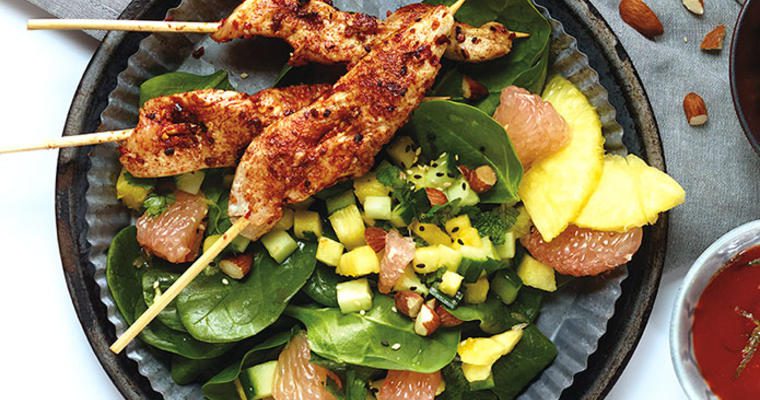As use of bold, adventurous flavors and fresh ingredients expands across healthcare foodservice, and we strive toward meeting our guests’ cultural preferences, two cuisines in particular—Cuban and Southeast Asian —are ideal choices for invigorating menus.
Fare with international flair
According to a 2015 report from Technomic Inc., Cuban cuisine is trending in healthcare foodservice. With its full-flavored pan-Latin fare, Cuban dishes offer abundant variety. Southeast Asian cuisine’s profusion of fresh vegetables, herbs, citrus, and contrasting textures, is inherently healthful and has broad appeal. Both cuisines are highly adaptable, which lets you use products already on hand. Just swap in seasonal produce and change up proteins to keep menus interesting.
“Baby boomers may well be the first generation that demands international cuisine,” says Bob Moulson, RD of the Milton, Ontario-based Gordon Food Service® Nutrition Resource Centre. “There is keen interest in mainstream dishes from around the globe.”
Gordon Food Service Corporate Consulting Chef Gerry Ludwig, CEC, agrees. “Within healthcare—and long-term care, specifically—diners are increasingly more sophisticated,” he says. “They’re looking for more variety, complex flavors, and inspired dishes that go beyond American comfort cuisine.”
Bowl them over
Incorporating a wide variety of vegetables into a healthcare foodservice diet is often challenging. Not with bowls. On-trend and nutritious, bowls are ideal vehicles for menuing Cuban and Southeast Asian cuisines. And they make it easy to create multiple combinations of healthy and flavorful elements.
Take a modular approach: Layer noodles, rice, or whole grains with an assortment of toppings—grilled chicken, roast pork, shrimp, and whatever veggies are on hand. A colorful Cuban-inspired bowl with plenty of eye appeal, for example, could contain brown rice topped with slow-simmered black beans, queso fresco, roast pork, and vegetables escabeche (quick pickles) or fresh avocado. A Korean beef rice bowl, with stir-fried sesame beef, zucchini, carrots, and spinach packs a nutritional punch with familiar, craveable flavors. Cross-utilization is a snap—grilled chicken, roast pork, or sizzling shrimp fit with either cuisine, as do fresh herbs, rice, and quick-pickled veggies.
Satisfy with sandwiches
Global sandwiches are an attractive option for lunch, grab and go, catering, and snacks. Vietnamese bahn-mi sandwiches are spot-on satisfying and provide great opportunity for innovation. While the traditional filling is chilled sliced pork, you could also use warm pulled pork or grilled chicken. Fresh herbs and pickled julienned veggies add crunch and contrast.
Use the same banh-mi roll to create a Cuban-inspired sandwich. Layer meat proteins such as braised chicken tinga, pork carnitas, or beef barbacoa with some combination of lettuce, tomatoes, salsa, sour cream, avocado, refried beans, roasted peppers, shoestring potatoes, and/or melting cheeses for sandwiches that overflow with flavor and serve as significant competitive differentiators, especially in cafeteria settings.
Ask your Customer Development Specialist about our Kitchen-Tested Recipes for Cuban and Southeast Asian dishes.




























